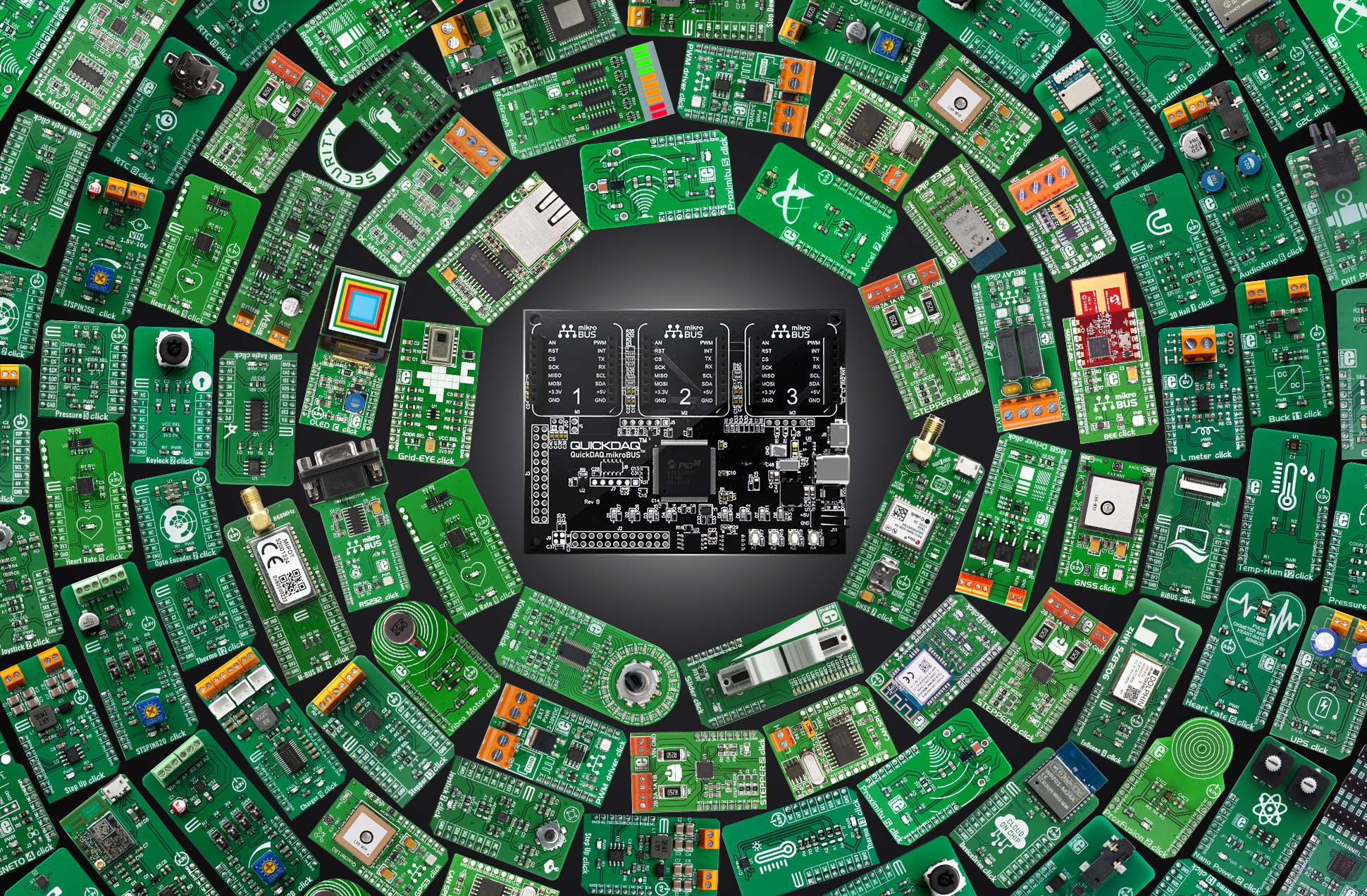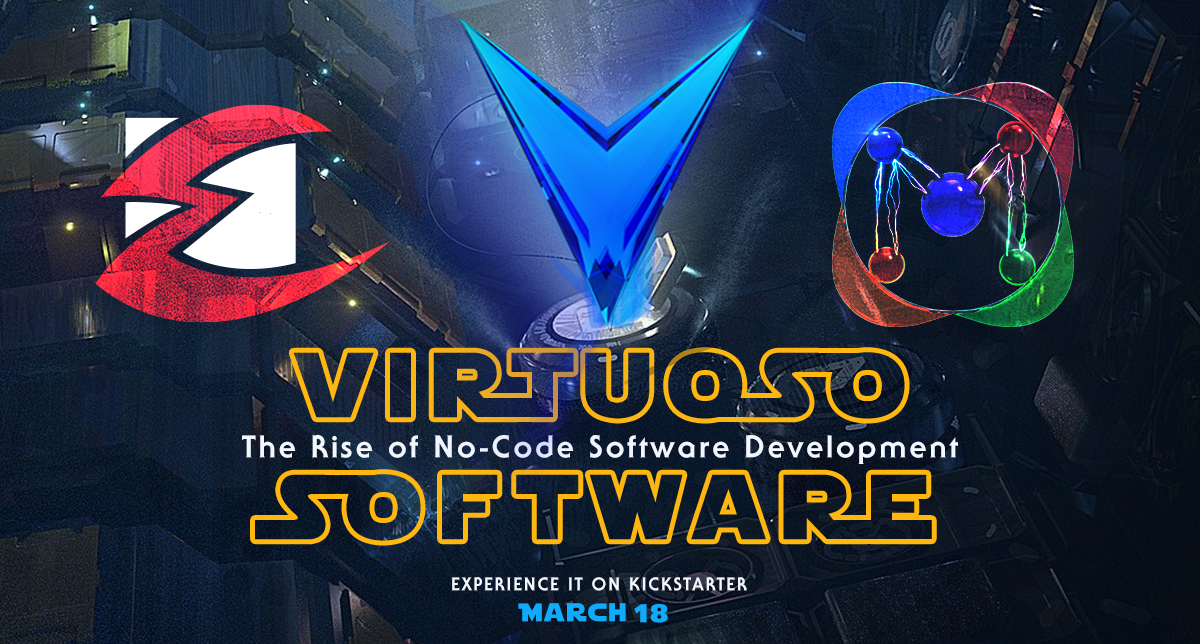What Is The QuickDAQ.mikroBUS™?
Let’s face it, writing software is a lot of fun. And writing software that interacts with the real world, like embedded systems do, is even more fun. But even for seasoned experts like us, working with hardware can be extremely difficult, and the complexity and hassle of just getting up and going is often an enormous obstacle. The QuickDAQ.mikroBUS™ project was born out of the desire to make working with custom electronics dramatically simpler, faster, and cheaper.
The QuickDAQ.mikroBUS™ can be thought of as a board that provides your computer with the same low-level peripherals that a microcontroller has, such as GPIO, analog input, PWM, SPI, I2C, UART, etc. It comes with a standard .NET class library and can be used in any normal .NET application, so in that sense it can be thought of as a Data Acquisition (DAQ) board, thus the name “QuickDAQ”. What makes it unique is that it is also specifically designed to operate in the Virtuoso Low-Code Environment.
What Is The Virtuoso Low-Code Environment?
Virtuoso is a state-of-the-art general purpose Low-Code platform, which means it gives you the ability to design applications at a high level of abstraction without writing any code. Virtuoso supports, among others, a C# .NET WPF host platform which allows you to design applications by dragging and dropping nodes, configuring them, and connecting them to each other. This is called “Node-Based Visual Programming”, and Virtuoso translates your high level graphical design to a fully formed Visual Studio project that you can build and run. So if you want to perform a high level task, like getting the current temperature in your city or sending a text message, you don’t need to bother with the underlying C# code. Just drag and drop your node, and you’re done. What’s particularly exciting about Virtuoso is that it’s built to scale: anyone can create nodes based on their C# code and share them with or license them to the community.
After you’ve dragged and dropped your nodes and your schematic design is complete, you can always go in and extend your application directly in C#. You can design your application in both the 3rd generation language (C#) and the 4th generation language (Node-Based Visual Programming) simultaneously, with no limitations whatsoever on what your application can do. Thus, Virtuoso is called a “Cross-Generation Language” workflow. You can also effortlessly host virtual microprocessors in your app, which is where the power of combining the QuickDAQ.mikroBUS™ with Virtuoso really shines.



